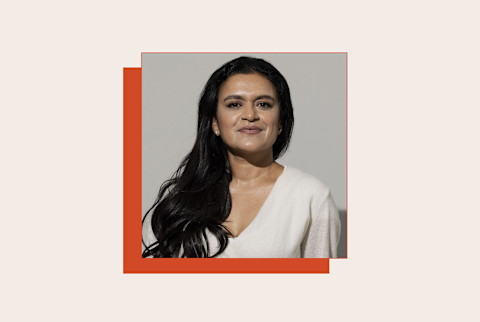The Neuroscience Of Intuition: Bridging Science & The Signs That Guide Us

When neuroscientist and doctor Tara Swart, M.D., Ph.D., lost her husband, she experienced something that her medical training couldn’t fully explain. “As soon as he passed away, I had this deep knowing that his body wasn’t him,” she shared on the mindbodygreen podcast. What followed was a series of experiences—deeply personal to her and her husband—that she could neither ignore nor rationalize away.
Rather than dismiss them, Swart’s curiosity as a scientist took over. How could these experiences fit within what we know about the brain, consciousness, and human connection? Her latest work explores this intersection—the space where neuroscience meets intuition, spirituality, and emotional intelligence.
Swart is known for helping individuals and companies achieve mental resilience and peak brain performance. But in her new book The Signs, she goes a step further—teaching us how to recognize the signals, both physical and symbolic, that guide us toward healing, clarity, and purpose.
Bridging neuroscience & intuition
For many of us, intuition can feel like something mystical or hard to quantify. But Swart argues that it’s simply another form of intelligence, one rooted in the body as much as the mind.
“We often talk about intuition as a ‘gut feeling,’ and neuroscience supports that,” she explains. “The limbic system, brainstem, and even the neurons in our gut all play a role in how we sense what’s right or wrong.” Emerging theories like the serotonin hypothesis even suggest that both trauma and hidden wisdom may be stored in the tissues of the body.
Swart’s perspective bridges the gap between science and spirituality. She references studies on near-death experiences, thousands of cases documented by psychiatrists like Bruce Greyson, M.D., that share strikingly similar details. “It’s hard to deny the patterns,” she says. “Science hasn’t fully explained them yet, but that doesn’t mean they aren’t real.”
For Swart, curiosity is the key. “We used to believe the brain stopped changing at 18. Now we know about neuroplasticity.” Science evolves, and so should our openness to what consciousness might mean.
How to tap into your inner knowing
Swart believes that everyone has the ability to strengthen their intuition. It’s not a gift for the few, but a muscle we can all develop.
“When you’re overthinking, you’re disconnected from your body,” she explains. Reconnecting requires both stillness and movement. Her favorite tools include:
- Journaling: Writing helps you process subconscious thoughts and spot patterns over time.
- Somatic practices: Yoga, drumming, or sound baths help release stored emotions and bring awareness back to the body.
- Time in nature: Go for a walk without distractions—no music, no podcast. Let your nervous system regulate through presence.
- Gratitude practice: When fear or anxiety sets in, Swart uses gratitude to reset her nervous system. “When you shift your mindset, the material world changes around you.”
She also points to the importance of community, while also being mindful of the people and environments you allow in your space. “The brain prunes away what doesn’t serve it,” she says. “You have to do the same with relationships.” If it’s not good for your energy, it’s not good for your brain.
Mindset, manifestation & the science of belief
In The Source, Swart replaced “vision boards” with action boards, a deliberate shift from passive dreaming to proactive creation. “You can’t sit at home and expect things to appear,” she says. “Manifestation is really about aligning your beliefs, thoughts, and behaviors toward a goal.”
She emphasizes that belief systems shape our biology and behavior. “What you believe about yourself determines the risks you take, the partners you choose, even how you care for your health.” When you change those core beliefs, your external reality starts to change, too.
Swart reframes manifestation as a process grounded in neuroscience: beliefs form thoughts, thoughts drive behaviors, and behaviors shape outcomes. It’s not magic—it’s mindset, reinforced through repetition and self-awareness.
Emotional health is data, too
“There’s a backlash happening,” she notes. People are realizing that belonging, creativity, and connection matter just as much as supplements and trackers. She cites research showing that people who engage with the arts—visiting museums, concerts, or theater—have a significantly lower risk of mortality. “It’s free, it’s joyful, and it reminds us that we’re part of something greater.”
For Swart, true longevity isn’t just about extending life but enriching it.
The takeaway
After years of studying the brain, guiding executives, and navigating personal loss, Swart’s message is simple: trust yourself.
“We don’t know everything,” she says. “Much of the universe is unseen, but that doesn’t mean it doesn’t exist. Staying open and curious expands consciousness.”
Her advice? Start small. Tune into your body. Notice synchronicities. Protect your energy. Practice gratitude. When you live with curiosity and connection, you start to “live without limits.”
